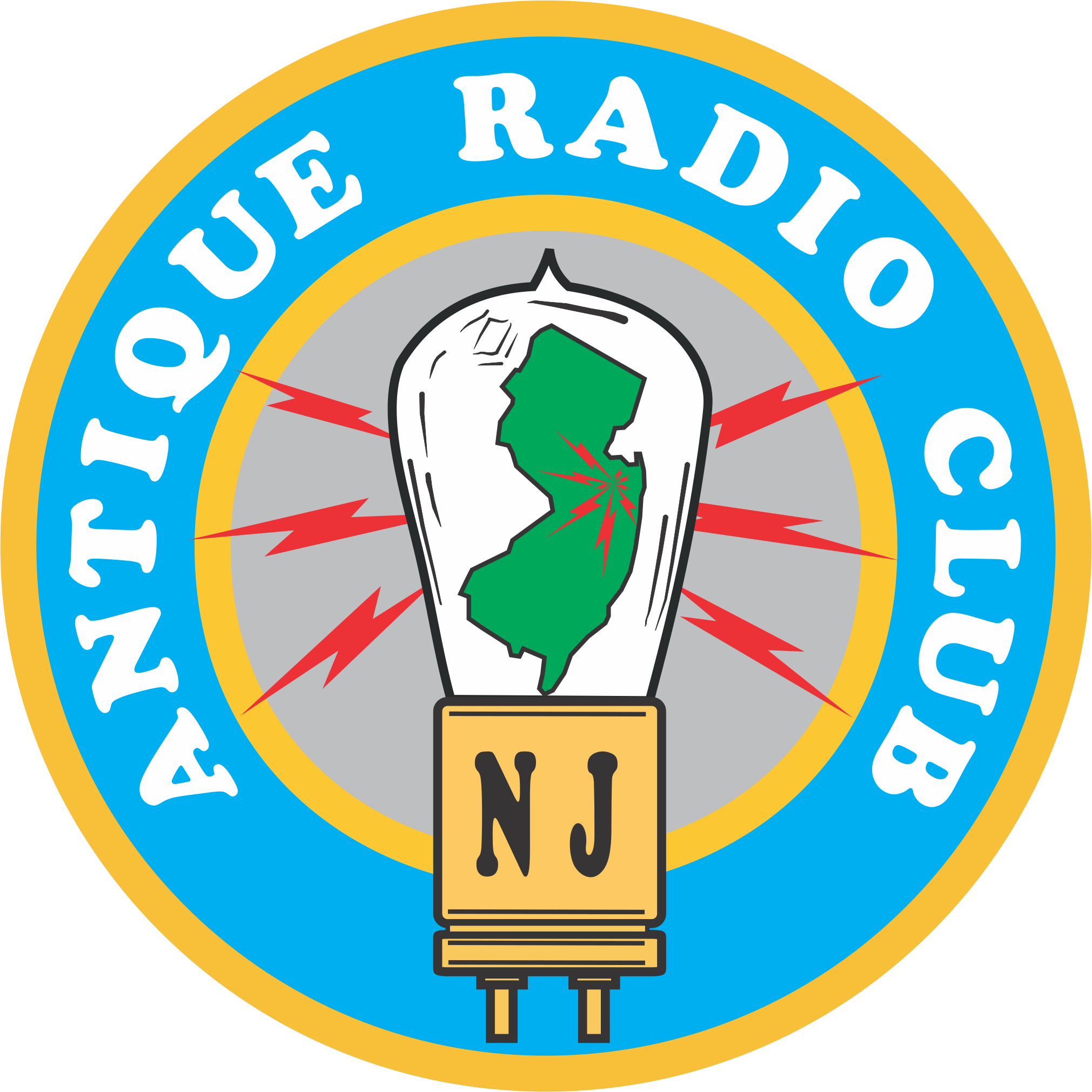Regeneration |
|
The Problem:Radio receivers of this era were passive devices known as "crystal sets." A piece of rock was used as a semiconductor rectifier to make the high-frequency alternating current captured by the antenna into pulsating DC that could produce sound in the headphones. All the energy that arrived at the listeners eardrums came from the transmitter. If the sending set was thousands of miles away, this represented a serious limitation, that could be solved only by building powerful and expensive transmitters. Lee DeForest's "Audion" triode (three element) vacuum tube offered a solution to this problem. It controlled energy from a local battery to produce a louder version of the incoming signal. However, it was expensive, unreliable, and it's operating principles were poorly understood. The Audion only worked a little better than the existing crystal detectors. |
“Great amplification obtained at once!”22 SEP 1912 |
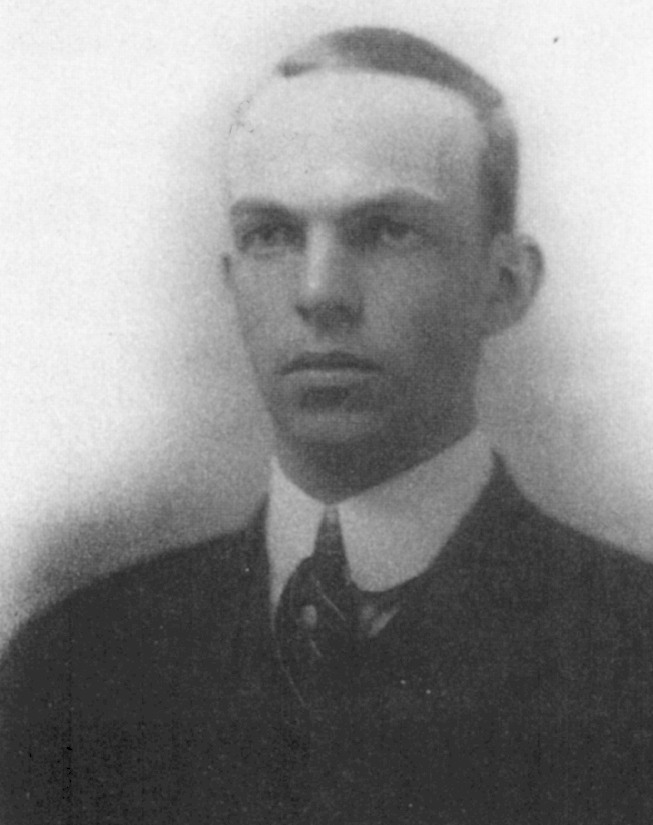 |
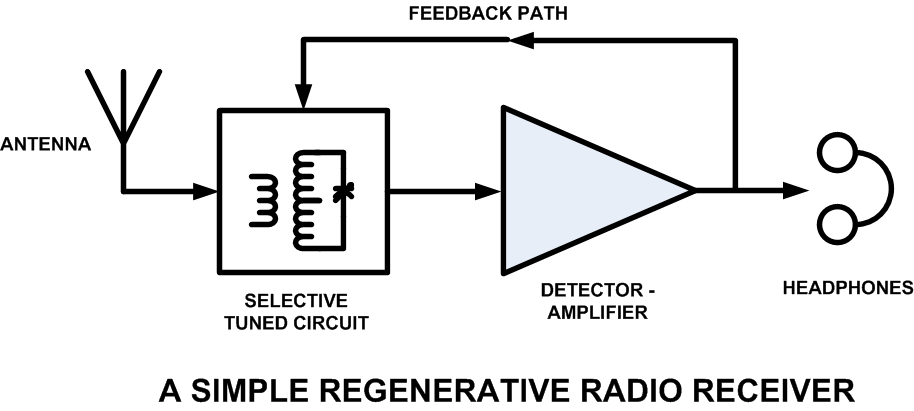 Armstrong discovered, that by feeding radio-frequency energy from the output of the amplifier tube back into the input tuned circuit, he could cancel out the electrical losses in that circuit, and vastly improve the performance of the radio. If there is sufficient feed back, the circuit will oscillate at the resonate frequency of the tuned circuit. This will allow heterodyne (beat-note) detection of continuous wave signals. In the oscillating state the circuit can also be used as a transmitter. Thus, the regenerative circuit enabled efficient CW telegraphy at both ends of the communications link. |
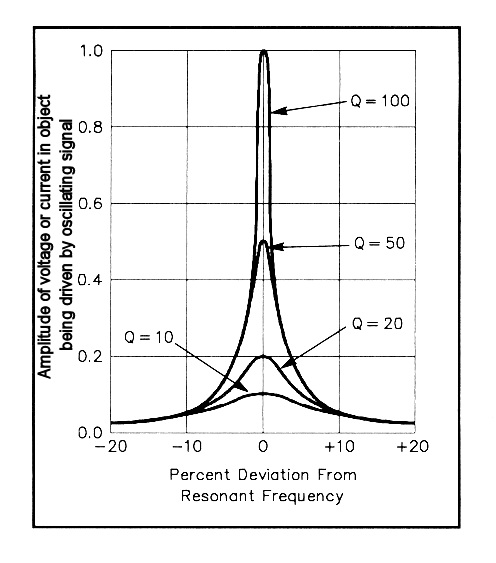 Reducing losses in a tuned circuit improves it's quality factor or "Q." This increases both signal strength and selectivity. |
Background |
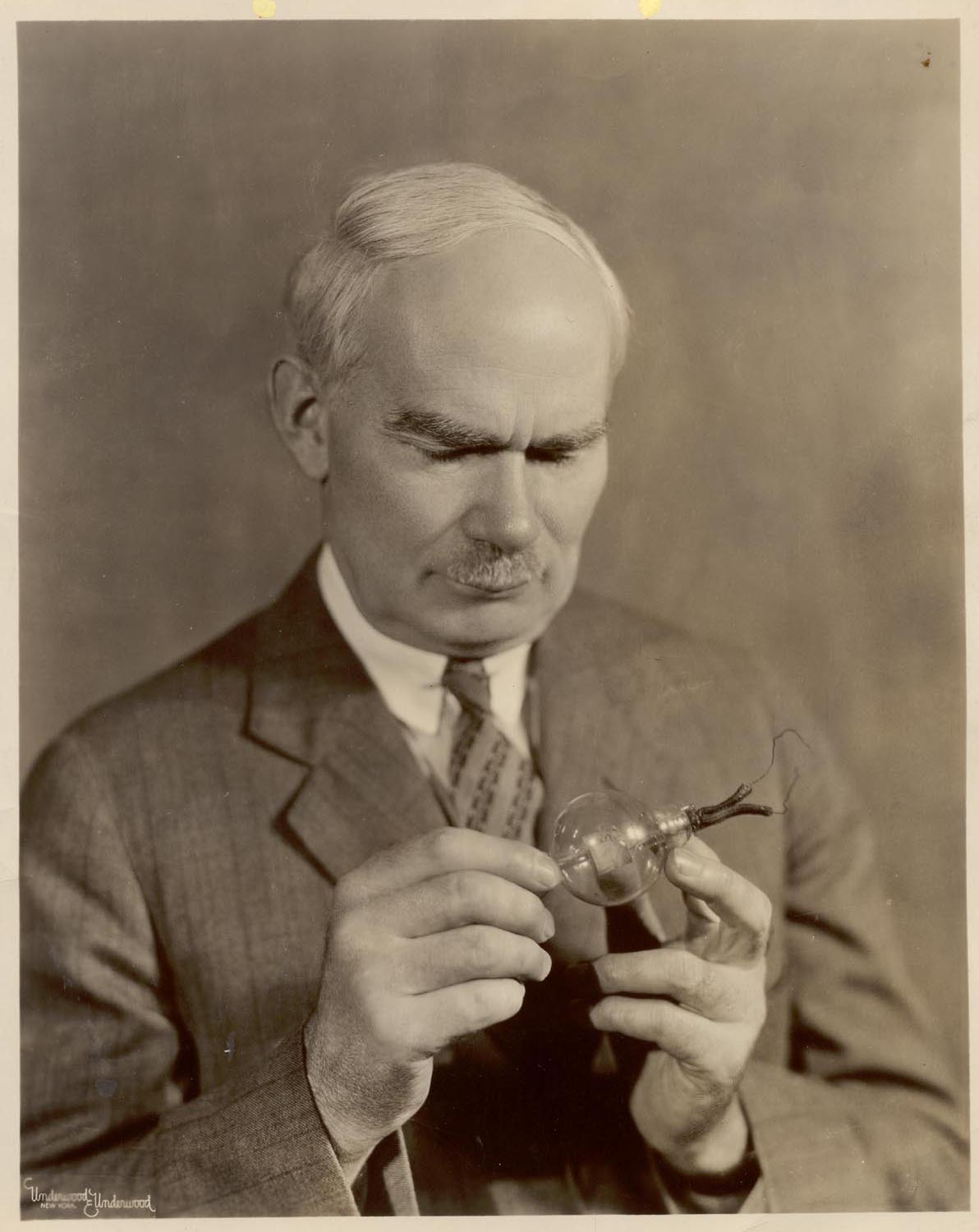 |
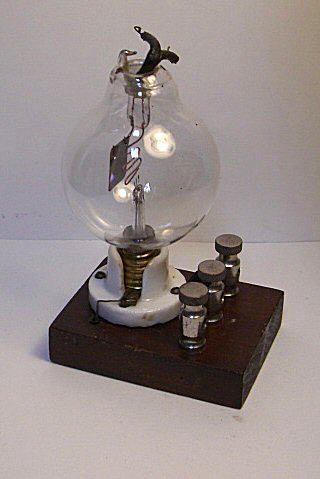 |
| Lee DeForest had invented the triode vacuum
tube in 1906, but its operation was poorly understood, and
its reliability was wanting. The "Audion" was
superior to all other radio detectors then in use, but not
by a sufficient margin to make up for its cost and short
life. |
|
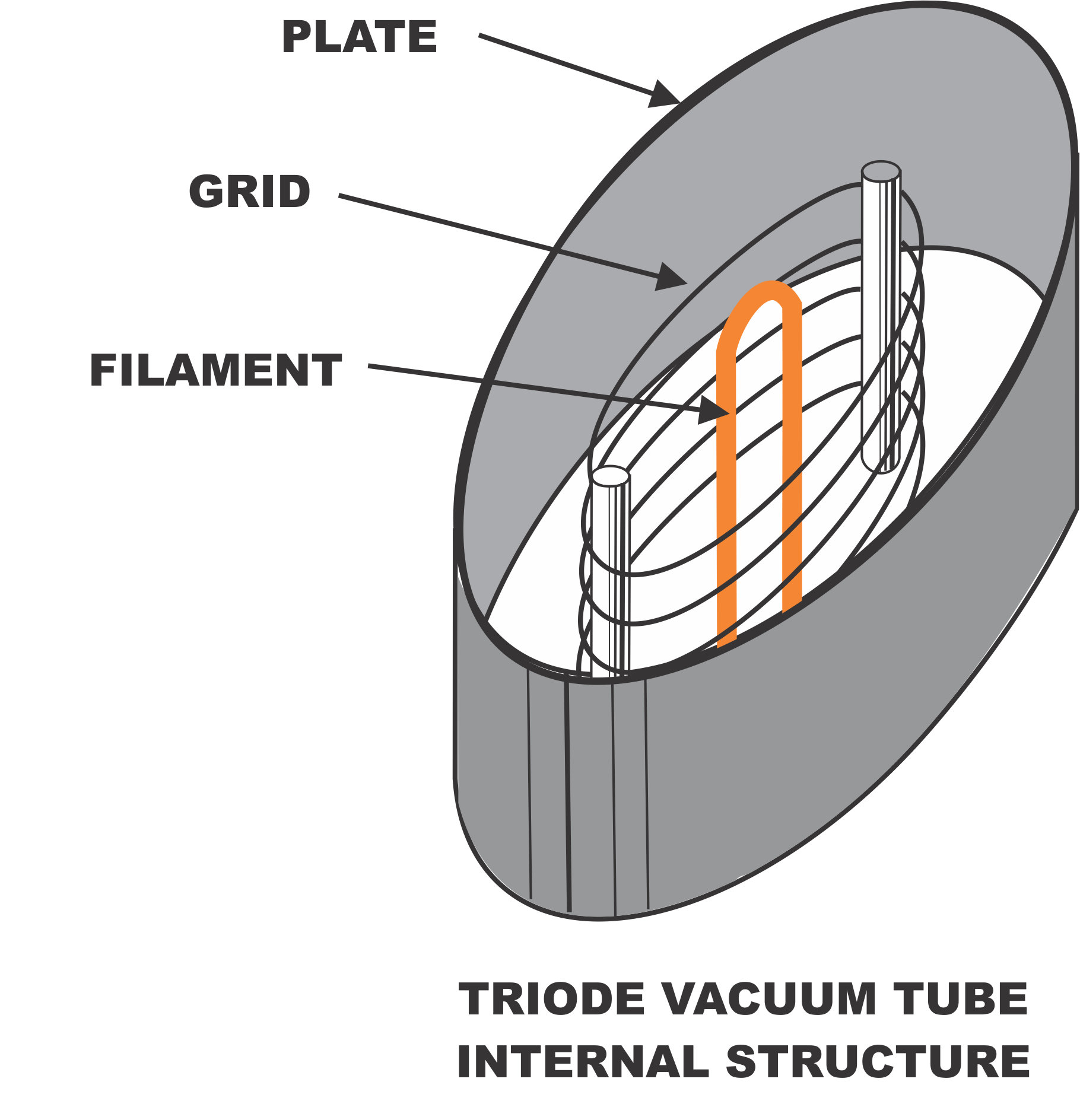 |
 Schematic Symbol |
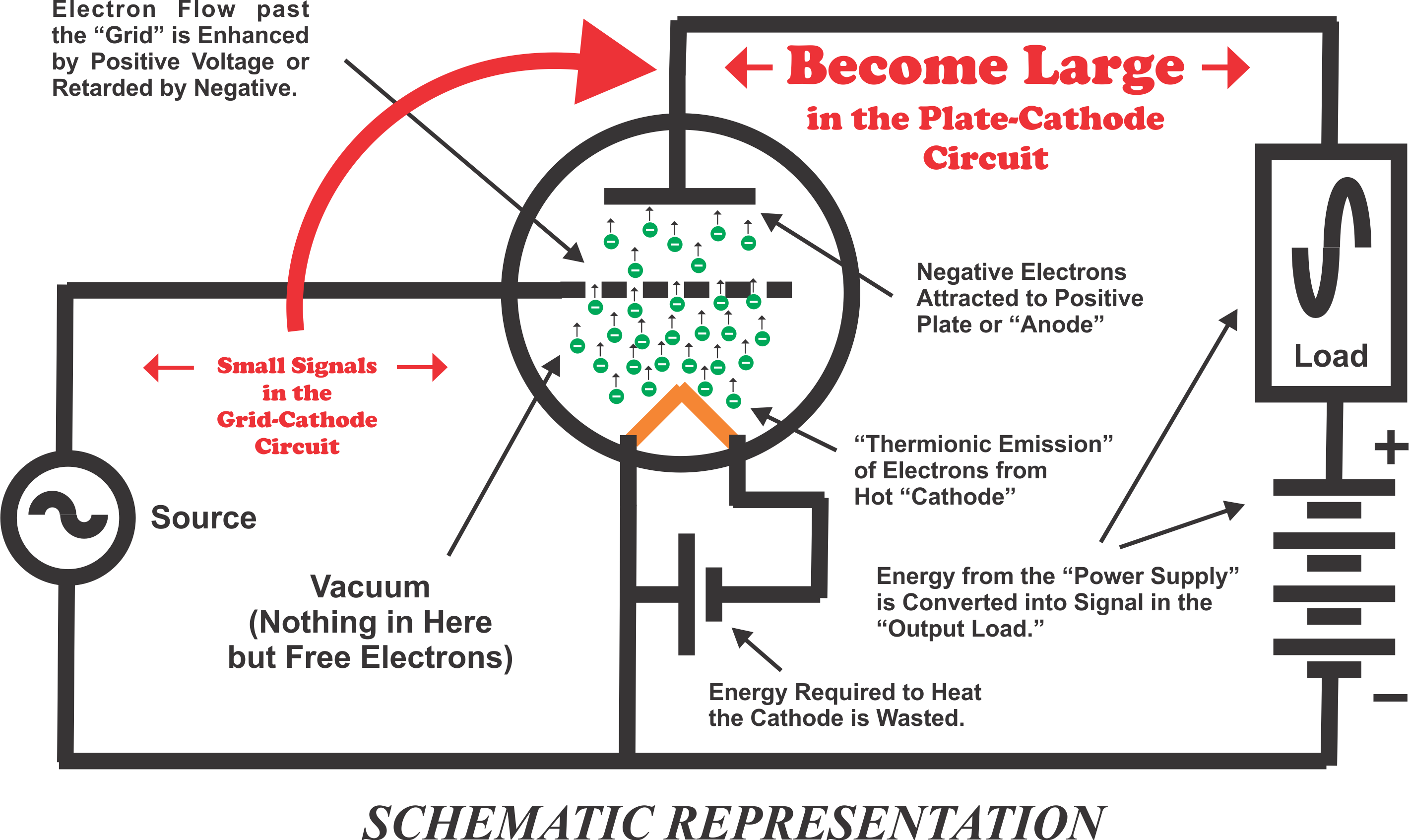 |
|
Armstrong's Experiment |
|
| Howard constructed a typical Audion receiver
as suggested by DeForest. In his own words: “However, during this investigation it was observed that a condenser placed across the telephone receivers in a simple audion receiver sometimes gave an increase in signal strength; not much of an increase, but nevertheless a very definite increase, and with only a small value of capacity. Now I tried a condenser across the phones many times before (what amateur has not, when graduating to the audion from crystal detector stage, where telephone shunt condensers originated), but never before had there been any observable change in signal strength." |
|
i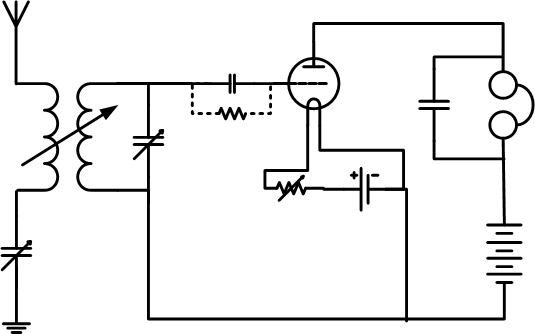
"The small condenser indicated strongly the presence of high-frequency oscillations in the plate circuit, and I thought about it a great deal without being able to account for their presence there in any satisfactory manner. During the summer vacation that year (1912 - ed.), an idea suggested by the fundamental axiom of radio, ''wherever there are high frequency oscillations, tune the circuit," and the idea to see what would happen if the plate circuit of an audion detector should be tuned by means of an Inductance. “
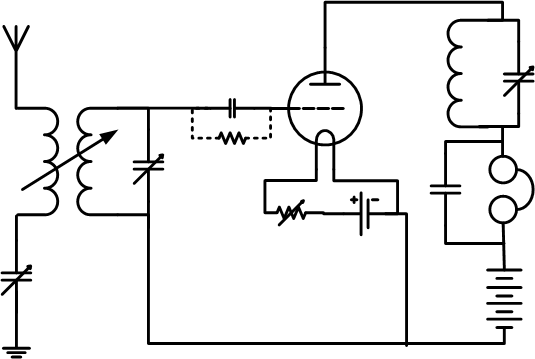
“All the old timers remember CC, later known as MCC and WCC, the Marconi press station at Wellfleet, Mass. This station was the one-hundred percent reliable testing standby of all experimenters, and on MCC the first tests were made. A standard audion detector system was set up and tuned in, and a tuning inductance introduced into the plate circuit of the audion.
Then various things began to happen. As the plate inductance was increased, the signals were boosted in strength to an intensity unbelievable for those days, the more inductance the louder the signal, until suddenly the characteristic tone of M. C. C. -- the tone which any of the old timers, if they heard it on Judgment Morn, would recognize instantly -- disappeared, and in its place was a loud hissing tone, undeniably the same station, but recognizable only by the characteristic swing and the messages transmitted.
A slight reduction of the plate Inductance and the old tone was back again, -- and then the placing of the hand near a tuning condenser, and the hissing tone reappeared.
It required no particular mental effort to realize that here was a fundamentally new phenomenon, as obscure as the principle of the operation of the audion itself, but which opened up an entirely new field of practical operation.”
THE REGENERATIVE CIRCUIT by Edwin H. Armstrong THE ELECTRIC JOURNAL. Vol. XVIII, No. 4, April 1921
Subsequent investigation at Columbia would reveal that the "new phenomenon" was radio-frequency oscillation. The circuit was producing radio-frequency oscillations.
